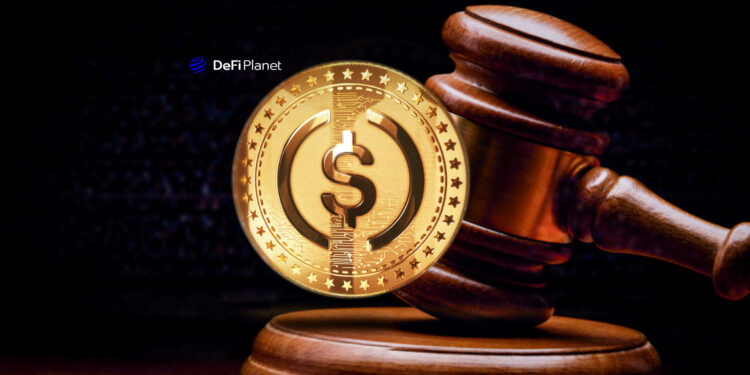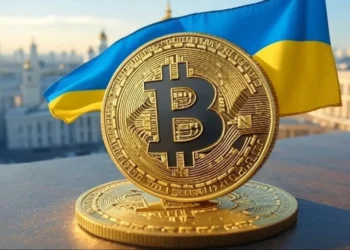Last updated on September 15th, 2023 at 01:41 pm
Stablecoins have become increasingly popular over the past few years, offering a solution to the unpredictability and volatility of the cryptocurrency market. The surge in popularity of stablecoins was further accelerated by the collapse of Terra’s algorithmic stablecoin, called terraUSD or UST, and the subsequent 99% crash of its sister token, LUNA.
This event has raised concerns among regulators and policymakers, particularly regarding the potential impact of stablecoins on financial stability, as well as their use in illicit activities such as money laundering and terrorism financing. To address these issues, regulatory bodies worldwide are contemplating implementing stablecoin legislation.
In this article, we will delve into the current state of stablecoin regulation across the globe and its implications for the broader cryptocurrency industry.
The Need for Stablecoin Legislation
Stablecoins have witnessed tremendous growth, with their market capitalization quadrupling in 2021, as illustrated in the image below. This growth in stablecoin adoption has also driven the expansion of DeFi.
Stablecoin market capitalization reached an all-time high of over $175 billion in December 2021 but subsequently dipped to under $160 billion by mid-2022.
Throughout 2021, stablecoins outpaced other crypto assets in terms of trading volume. This popularity stems from their utility in settling derivative and spot trades across crypto-asset platforms and apps, all without the need for conversion to fiat currency.
During this same period, DeFi experienced remarkable growth, reaching a market capitalization of approximately $100 billion by December 2021. The emergence of stablecoins played a pivotal role in fostering a mutually beneficial relationship between the two. However, DeFi’s growth was short-lived, as it experienced a significant decline in 2022.

Stablecoins, commonly utilized in DeFi applications and other cryptocurrency services, warrant regulatory attention, according to the Global Financial Stability Report (GFSR). These include stablecoin issuers, hosted wallet service providers, centralized crypto exchanges, network administrators, reserve managers, and market makers.
Adopting stablecoins presents certain risks, such as the proliferation of unregulated stablecoins, their integration with the existing financial system, and their adoption as both a medium of exchange and a store of wealth.
However, stablecoins backed by robust and liquid reserves can serve as reliable stores of value, aligning with their goal of establishing a payment system and becoming a widely accepted medium of exchange.
While stablecoins are currently primarily used within the crypto ecosystem, they may eventually gain widespread acceptance and integration with pre-existing financial institutions and payment infrastructures.
Nevertheless, the absence of strong regulatory frameworks for stablecoins could increase prudential, conduct, and payment system-related risks, causing instability.
Increasing coordination among standard-setters is imperative to develop comprehensive international standards, particularly for non-systemic stablecoins.
This coordination is essential to mitigate the risks that stablecoins pose to financial and operational stability, market integrity, and consumer/investor protection.
The FSB (Financial Stability Board) declaration concerning the international legislation and supervision of cryptoasset activities represents a positive step towards addressing these risks.
Stablecoin Regulation Around the World
The global landscape of stablecoin regulation is diverse, with countries adopting various approaches to address the evolving stablecoin market. This section provides an overview of the regulatory developments in different countries, with a focus on the United States, the European Union, China, Japan, and Singapore.
United States
The United States has been at the forefront of regulating stablecoins. In response to the rapid growth of stablecoins, the Financial Stability Oversight Council (FSOC) published a report in 2019 advocating for regulatory monitoring. The report expressed concerns about the potential impact of stablecoins on financial stability.
Two pivotal pieces of proposed legislation, the STABLE Act and the Digital Asset Market Structure and Investor Protection Act, have garnered significant attention.
The STABLE Act, introduced in late 2020, seeks to treat stablecoin issuers akin to traditional banks, requiring them to obtain banking licenses and adhere to Federal Reserve oversight. This legislation also mandates the maintenance of full reserves against stablecoins in circulation, signaling a departure from the current regulatory landscape.
The Digital Asset Market Structure and Investor Protection Act, presented in early 2021, proposes classifying all digital assets as securities and subjecting them to the SEC’s regulation. Although not explicitly mentioning stablecoins, this broad definition of “digital asset” could encompass them if used for investment purposes. This act could necessitate stablecoin issuers to register with the SEC and comply with various regulatory obligations.
These legislative initiatives reflect the meticulous scrutiny of the U.S. stablecoin sector, underscoring the importance of enhanced oversight and transparency in the rapidly expanding crypto economy.
European Union
While the European Union (EU) has yet to issue specific regulations for stablecoins, they currently fall under the existing legal framework governing electronic money and payment services. Responding to the European Central Bank’s call for consistent stablecoin regulation across the EU, the European Commission is actively developing a comprehensive regulatory framework.
China
In China, stablecoins are explicitly prohibited, and cryptocurrency exchanges are subject to rigorous regulation. The People’s Bank of China (PBOC) has been actively developing its own central bank digital currency (CBDC) to replace physical currency and exert greater control over the monetary system. China forbids financial institutions from providing any cryptocurrency-related services, extending these rules to stablecoin regulation.
Japan
Japan treats stablecoins as a type of cryptocurrency, subjecting them to the same rules as other digital assets. However, the Japanese Financial Services Agency (FSA) has cautioned that stablecoins could threaten financial stability if widely used.
Singapore
Singapore has positioned itself as a hub for cryptocurrency and blockchain technology development, maintaining a comparatively permissive legal framework. The Payment Services Act applies to stablecoins, requiring issuers to obtain licenses from the Monetary Authority of Singapore (MAS) and adhere to anti-money laundering (AML) and know-your-customer (KYC) regulations.
Under the Securities and Futures Act (SFA), stablecoins backed by fiat currency or other assets primarily used for payments or remittances fall under the scope of regulatory oversight. The SFA establishes a framework for regulating securities and derivatives trading, setting out requirements for issuers, intermediaries, and market operators.
Analyzing the Potential Effects of Stablecoin Regulation on the Wider Crypto Industry
Stablecoin regulation could have a wide range of effects on cryptocurrency exchanges, the number of trades, and market liquidity. These effects could be complex and nuanced.
Cryptocurrency Exchanges
As regulators strive to ensure that stablecoins are adequately backed and that stablecoin issuers possess sufficient capital, trading exchanges for stablecoins may become subject to intensified scrutiny and increased reporting requirements. Consequently, compliance costs may rise for exchanges, potentially reducing the number of exchanges facilitating stablecoin trading.
Trading Volumes and Market Liquidity
Stablecoins play a crucial role in the broader cryptocurrency ecosystem as they are frequently used for transferring value between various cryptocurrencies. Stablecoin regulation could impact the liquidity of other cryptocurrencies if it affects either the number of tradable stablecoins or the trading volume of stablecoins.
Crypto Market
Legislation fostering the acceptance of stablecoins as a means of transaction and value storage could lead to increased adoption and regulatory certainty for stablecoins. This, in turn, would enhance the overall stability and liquidity of the cryptocurrency market.
Challenges of Stablecoin Legislation
Below are some of the challenges associated with stablecoin legislation:
Balancing Regulation and Innovation
One of the primary challenges of stablecoin regulation lies in striking the right balance between fostering innovation in the crypto industry and ensuring effective regulatory oversight.
Excessively strict regulations can stifle individuals’ creativity and impede the development of new stablecoin products. Conversely, a lack of regulations may expose the market to fraudulent activities and instability, thereby jeopardizing the interests of investors.
Ensuring Market Stability
Stablecoins are designed to maintain a stable value, often by being backed by underlying assets such as the US dollar. However, without adequate reserves or robust risk management by stablecoin issuers, these stablecoins can become volatile and disrupt the market.
To mitigate the risk of market instability, regulators must devise mechanisms to ensure that stablecoin issuers maintain sufficient reserves and effectively manage risk.
Future Outlook of Stablecoin Regulation
The future of stablecoin regulation will likely be influenced by various factors, including the regulatory approaches adopted by different countries, the level of international cooperation among regulators, and the pace of technological innovation within the stablecoin industry.
One potential scenario involves stablecoins being classified as traditional financial instruments, subject to the same rules and regulations that govern other financial assets. In this case, stablecoin issuers may be required to register as financial institutions, obtain necessary licenses, and adhere to anti-money laundering and other financial standards.
An example of this approach can be seen in the United States, where the Securities and Exchange Commission (SEC) has argued that some stablecoins may be regarded as securities, prompting legal action against some stablecoin issuers like Paxos.
Another approach is to think of stablecoins as a new type of asset that requires new laws tailored to their unique properties. This could include creating a new regulatory framework for stablecoins that considers their decentralized nature, use of blockchain technology, and potential to disrupt current financial systems.
While strategies for stablecoin regulation are still in the works, their impact is expected to be a mixed bag. On the positive side, effective and transparent regulation has the potential to mitigate some of the risks associated with stablecoins, such as financial instability and money laundering. It could instill greater confidence in users and investors, boosting adoption and fostering innovation within the stablecoin market.
Conversely, overly stringent legislation could stifle creativity and hinder the development of novel use cases for stablecoins. Also, it might raise entry barriers for potential competitors, favouring established players and diminishing market competition.
Finally, we must acknowledge that there is a risk that regulations designed for traditional financial instruments may not align with the unique characteristics of stablecoins, which may result in unintended consequences and undesirable outcomes.
Disclaimer: This article is intended solely for informational purposes only and should not be considered trading or investment advice. Nothing herein should be construed as financial, legal, or tax advice. Trading or investing in cryptocurrencies carries a considerable risk of financial loss. Always conduct due diligence.
If you would like to read more articles like this, visit DeFi Planet and follow us on Twitter, LinkedIn, Facebook, and Instagram, and CoinMarketCap Community.
“Take control of your crypto portfolio with MARKETS PRO, DeFi Planet’s suite of analytics tools.”























